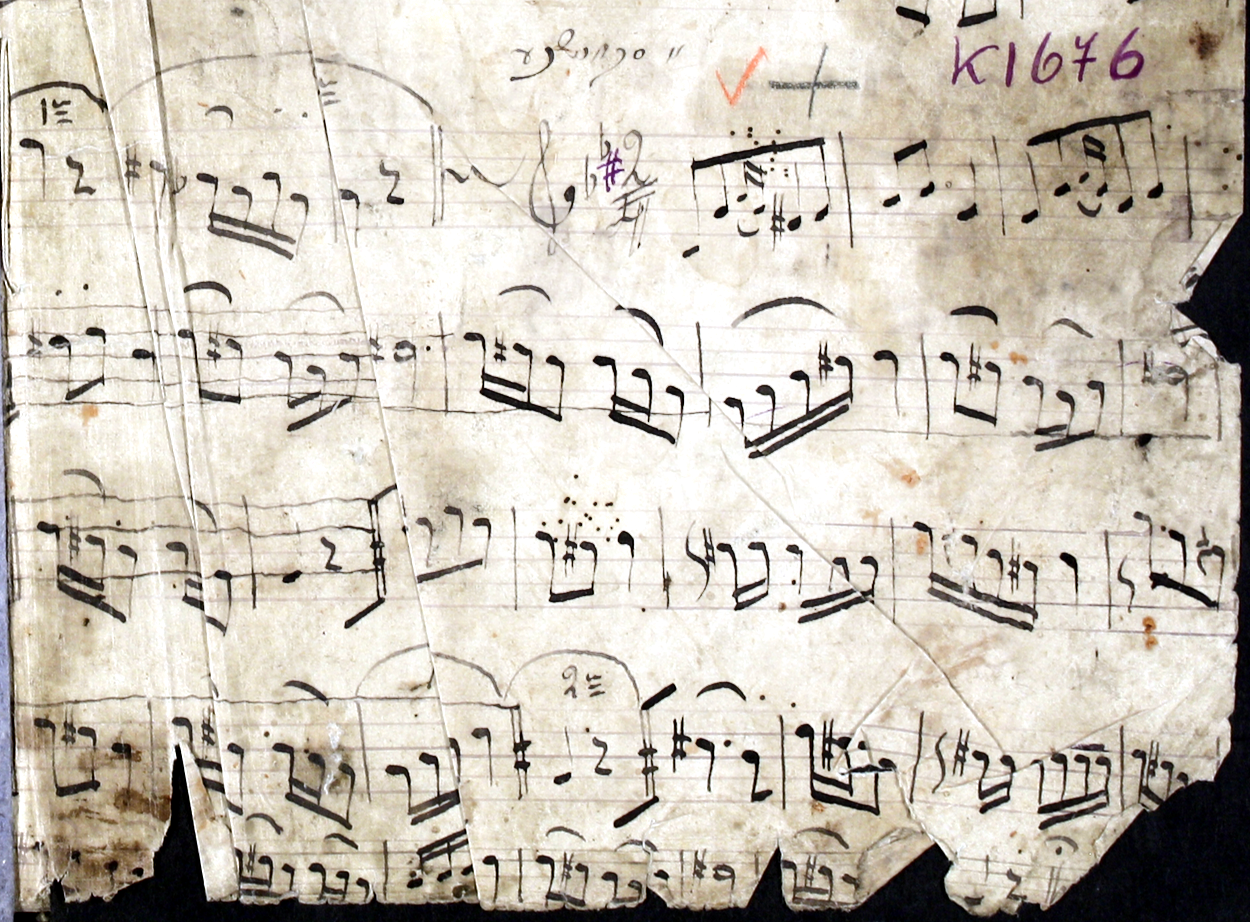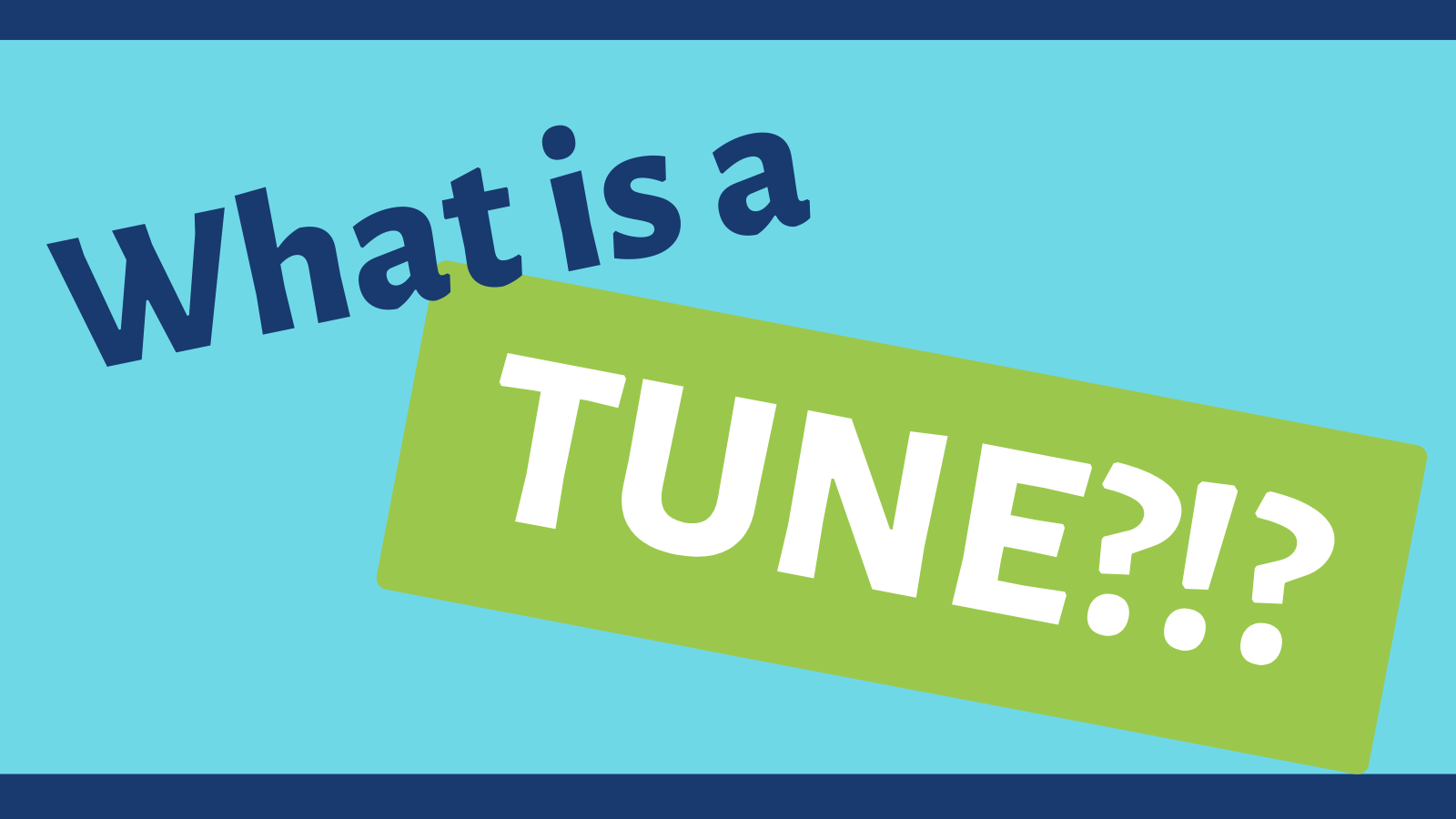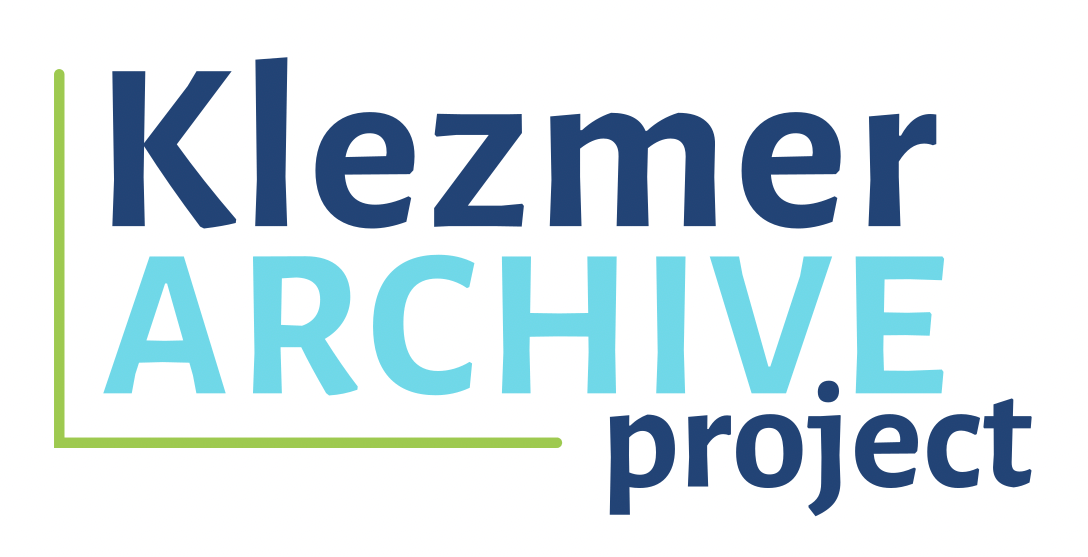Encoding in MEI: "Hannah's Skotshne"
June 2, 2025

Manuscript to Encoding #
Ah, our beloved “Hannah’s Skotshne” (KMDMP 20-59-1676).
By now, many of you have heard the tale of this tune that has swept around the globe since the launch of the Kiselgof-Makonovetsky Digital Manuscript Project (KMDMP). The original manuscript captured in the photo is torn, folded, and worn to the point of illegibility.
Image 1: Facsimile of the “Hannah’s Skotshne” Manuscript

Between Two Worlds: Modes in Motl Reyder's Notebook from the Kiselgof-Makonovetsky Digital Manuscript Project
June 2, 2025

As we play, sing, and explore the precious collection of manuscripts from the Vernadsky National Library of Ukraine, in Kyiv—made available through the Kiselgof-Makonovetsky Digital Manuscript Project (KMDMP)—we can ask questions about the repertoire. What genres are represented? What is the balance of core Jewish, transitional, co-territorial, and cosmopolitan repertoires? How do the collections from different sources compare: the wedding book from Makonovetsky (b. 1872), a violinist who was an important informant for Beregovski; the notebook (Heft) from Motl Reyder, a violinist from Dubno (b. 1843); the repertoire from Moisei Komedian Gershkovitch (dates and location unknown), and so forth. Where does the repertoire come from? Mariko Mishiro has done important work on these questions based on Beregovski’s catalog of tunes (Mishiro 2021). Mishiro observes, for instance, that there is a large proportion of core repertoire, more than in the American recordings of Naftule Brandwein and Dave Tarras.
...Klezmer Archive DHAG Phase I White Paper
August 15, 2023

The Klezmer Archive Project team is delighted to announce the public release of the Klezmer Archive DHAG Phase I White paper. Please be in touch with any questions or comments. We’d love to talk to you about our work.
Read more about the project at the Klezmer Archive Page.
You can download the PDF here.
The Klezmer Archive (KA) project is creating a universally accessible digital archival tool for interaction, discovery, and research on available information about klezmer music
and its network of contemporary and historical people. Taking individual melodies as
the primary artifact, the digital archive will integrate existing tools and archival methods in novel ways to facilitate search and discovery rooted in the needs of its contemporary heritage community. Tooling and frameworks developed for the Klezmer Archive project will be available for heritage communities to adapt for their own domain-specific uses, and will be particularly useful for the preservation and study of intangible cultural heritage.
Documenting Folklore in Digital Structures — The Fuzzy Genre Boundary Conundrum
October 24, 2022

How do we make sense of conflicting data to arrive at genre designations that resonate with historical practice? How do we account for overlapping or confusing genre classifications, especially when there may be more than one “correct” answer? How do we organize classifications and typologies in such a way that they are useful for search? These questions were posed in a letter from me to librarian Beth Dwoskin on 06/20/2021 and discussed in a team session at the October 2021 retreat.
...Towards Documenting Human Relationships
June 15, 2022

“A song is the past, present, and future, because all that is life is in these songs. Right now my songs are the present, but they are the future as well - your future. Your children will also sing these songs, and you’ll tell them that once there was an Aunt Bronya, and she sang songs like this!” - Bronya Sakina
As part of my internship work at the Center for Traditional Music and Dance, I had the honor of digitizing the field recordings of 2015 NEA National Heritage Fellow Michael Alpert— renowned Yiddish singer, multi-instrumentalist, dancer, and researcher. Having an intimate knowledge of his work, I was interested in seeing it mapped out in Networker. His work is a perfect example of oral transmission and exposes some key places to expand our ontology.
...The Fuzzy Tune Boundaries Problem
June 10, 2022

When considering how to accurately structure the dataset of klezmer music, we must answer a surprisingly complex question: how do we define a tune? And how do we best capture our diverse and often conflicting understandings of tunes into a clean, consistent data model?
The classic Y.L. Peretz short story “A gilgul fun a nign” tells the tale of a nign as it migrates from town to town, starting off as a Hasidic wedding melody, moving to the Yiddish theater, a circus, back to the Hasidic rebbe, and finally off to America. Though the essence of the tune remains constant, the performance style and social context are continuously transformed. Is the tune from the beginning of the story the same at the end? Or does it become something new at each stage?
...Welcome to the Klezmer Archive Project Blog!!
June 4, 2022

In our first post we’d like to briefly describe how The Klezmer Archive Project and the Kiselgof-Makonovetsky Digital Manuscript Project (KMDMP) relate to each other while being distinct projects with different design, audience and objectives. The KMDMP corpus is being used as a “test corpus” for the Klezmer Archive Project, and the crowdsourcing and community-building aspects of the project are informing Klezmer Archive research in the areas of user experience, data ingestion, and ontology building among others. Both projects were startup initiatives of the Klezmer Institute that began in 2020. The Klezmer Archive Project has been funded by a Phase I NEH Digital Humanities Advancement Grant from 2021-2022, while KMDMP is supported solely by individual donations.
...Announcing the Klezmer Archive Project Blog!
September 30, 2021

Howdy friends,
Welcome to the new blog for the Klezmer Archive Project. We are excited to start sharing some of the work we have been doing with the project and will use this space to keep members of our community and other intrested folks up to date on what we’re up to!
